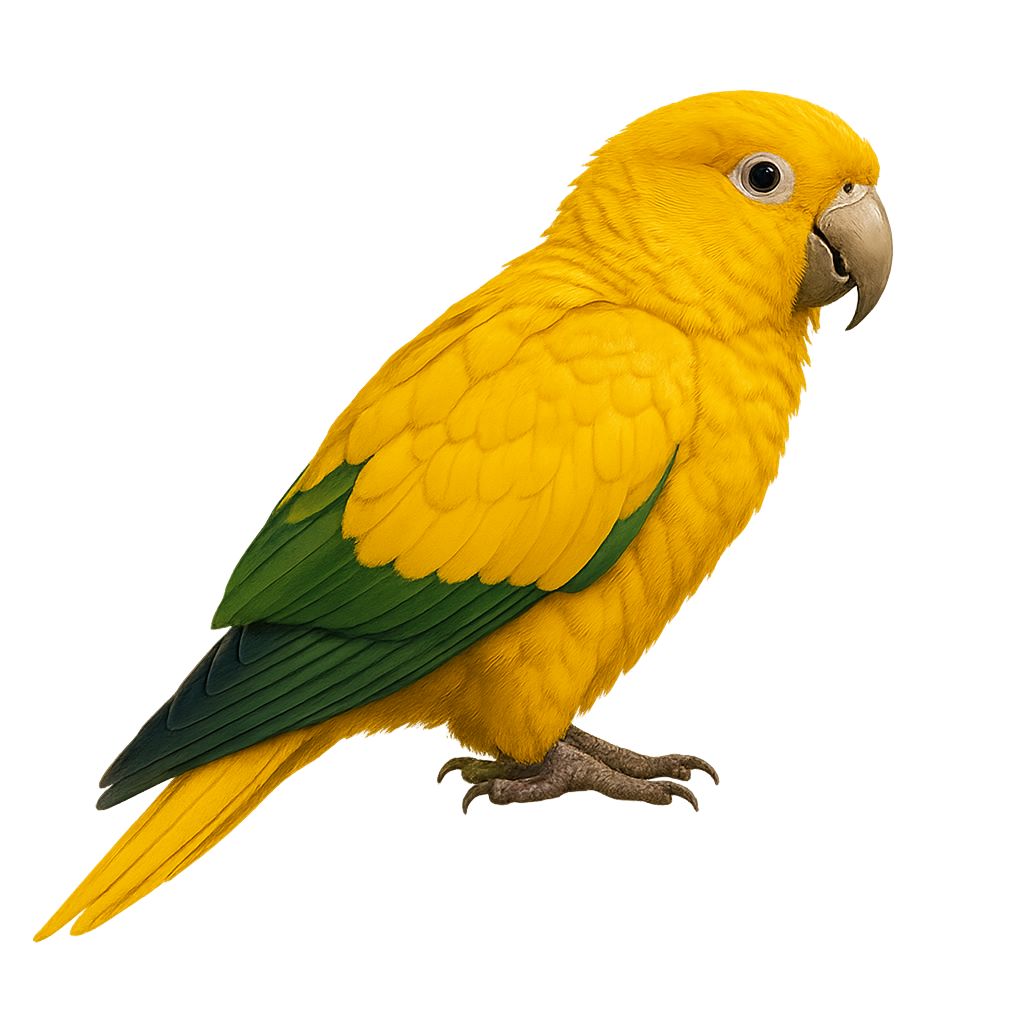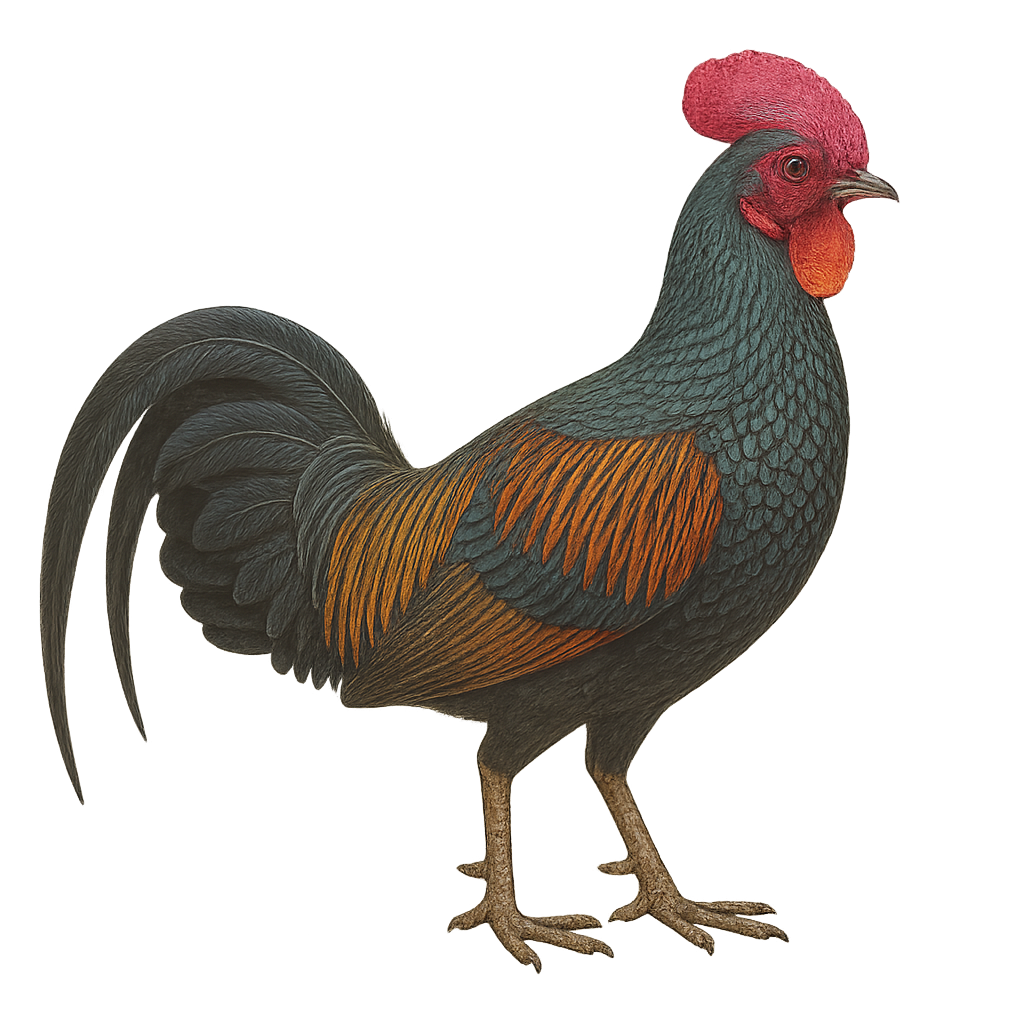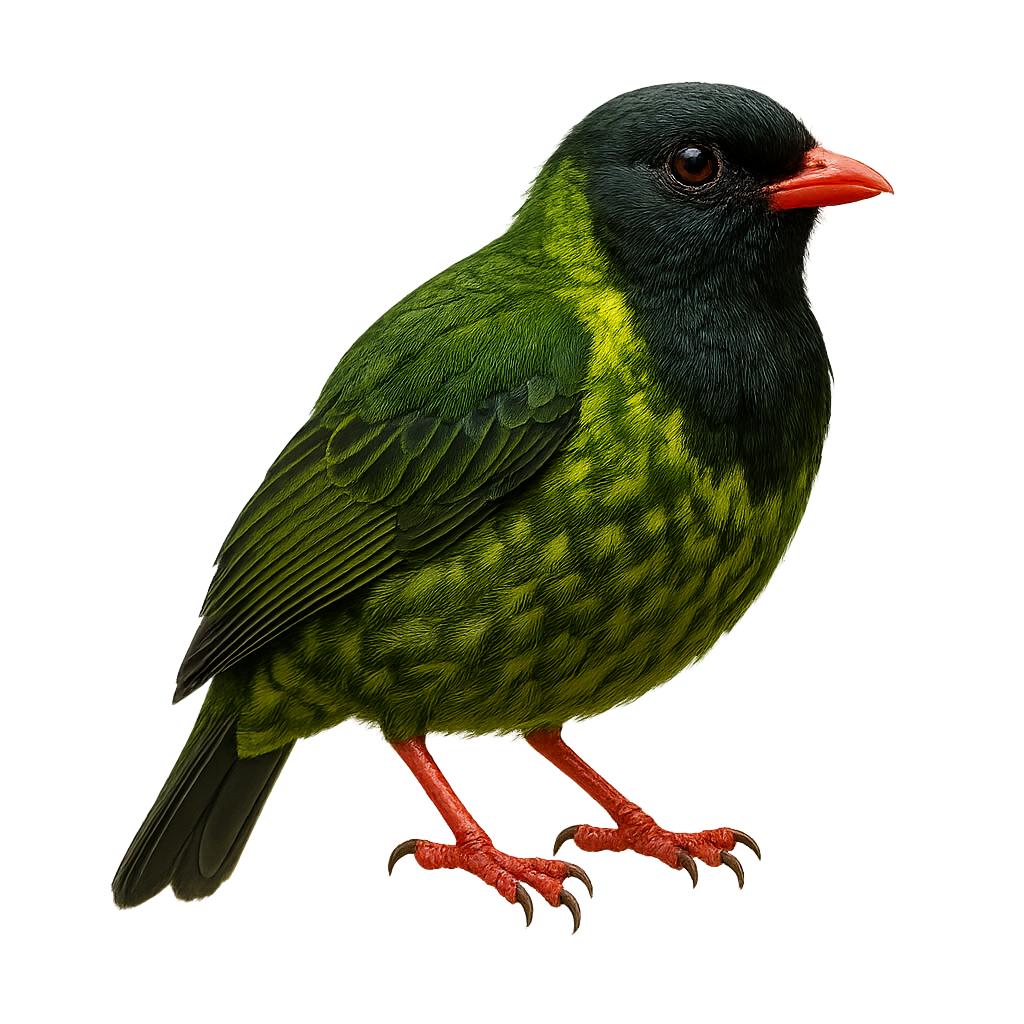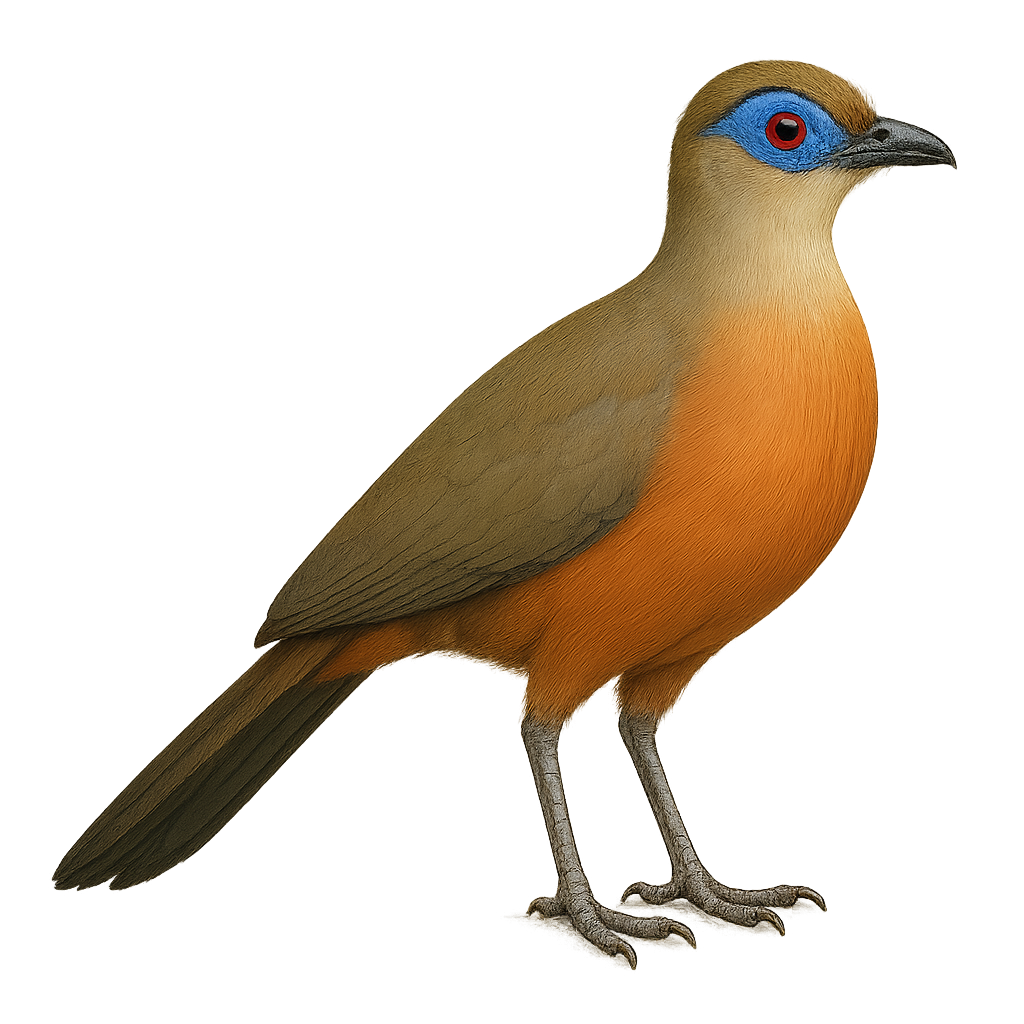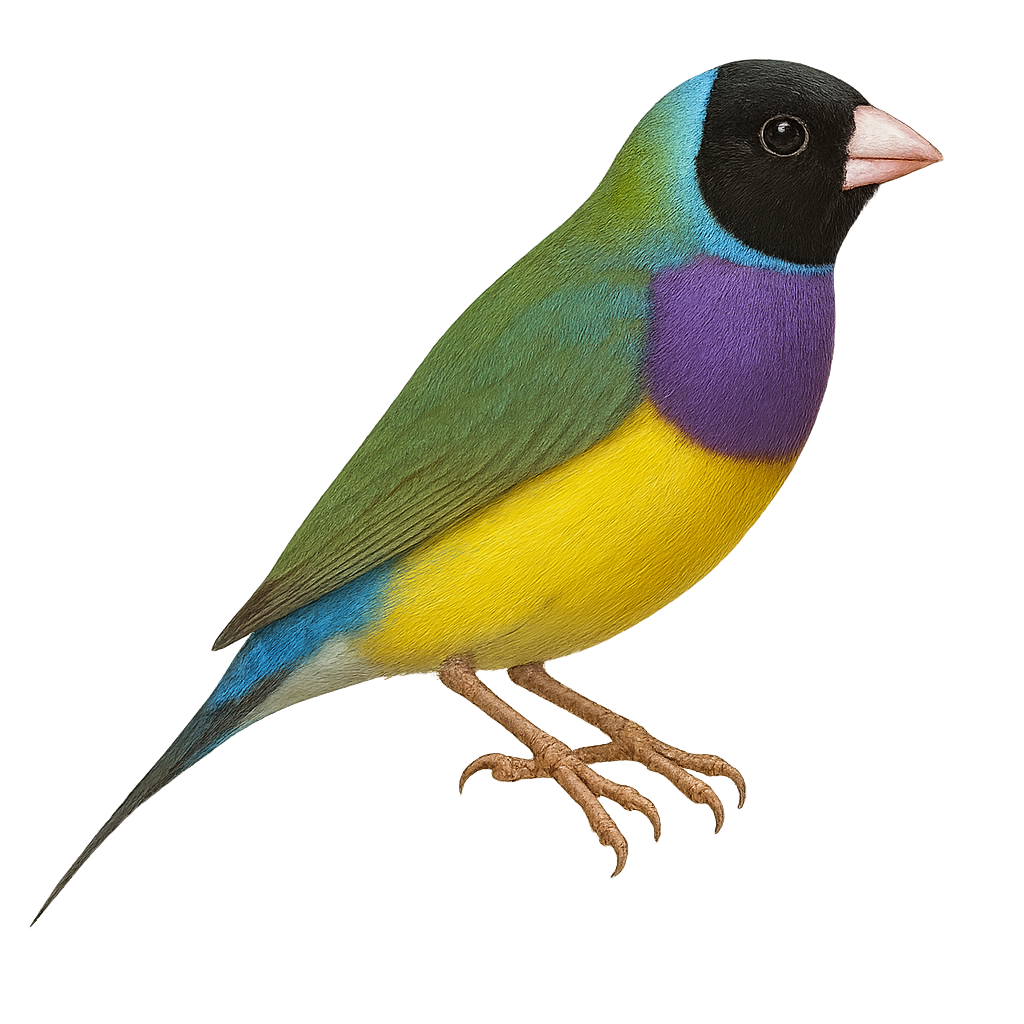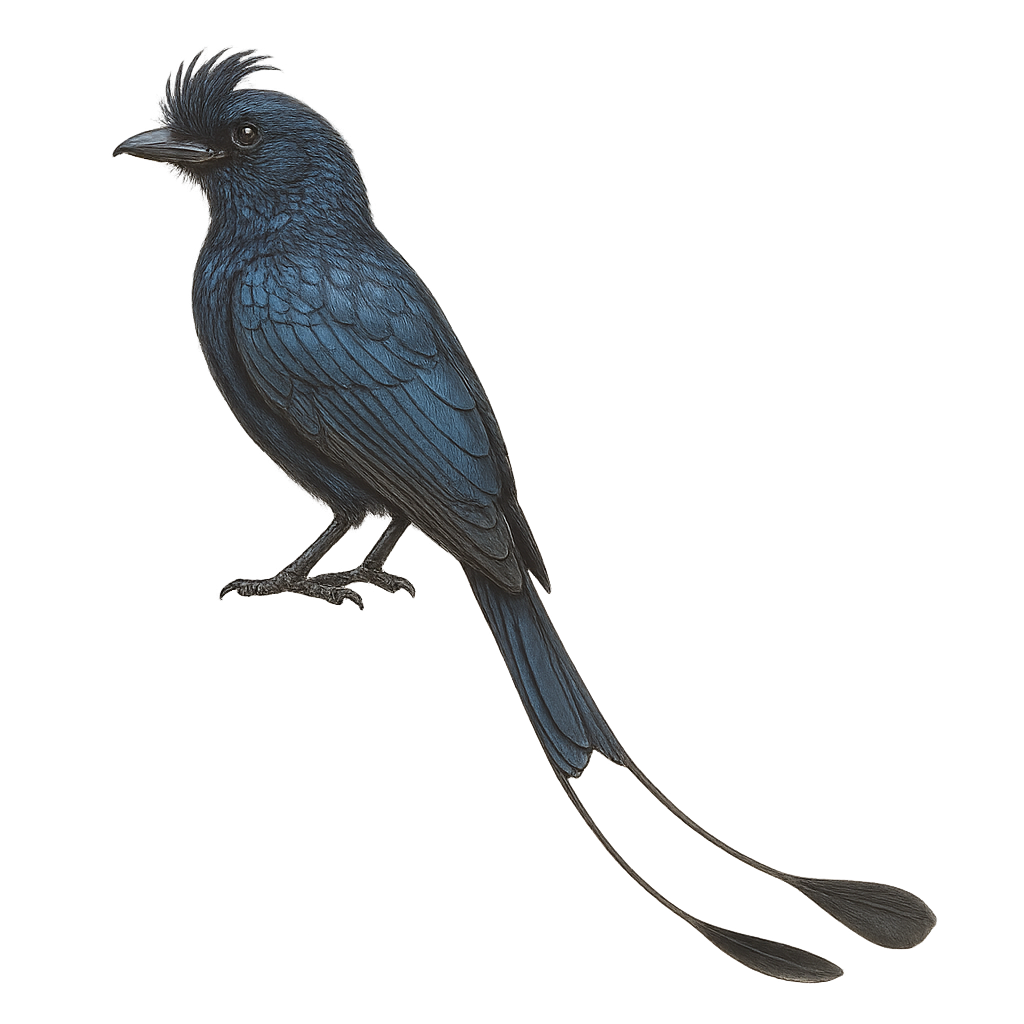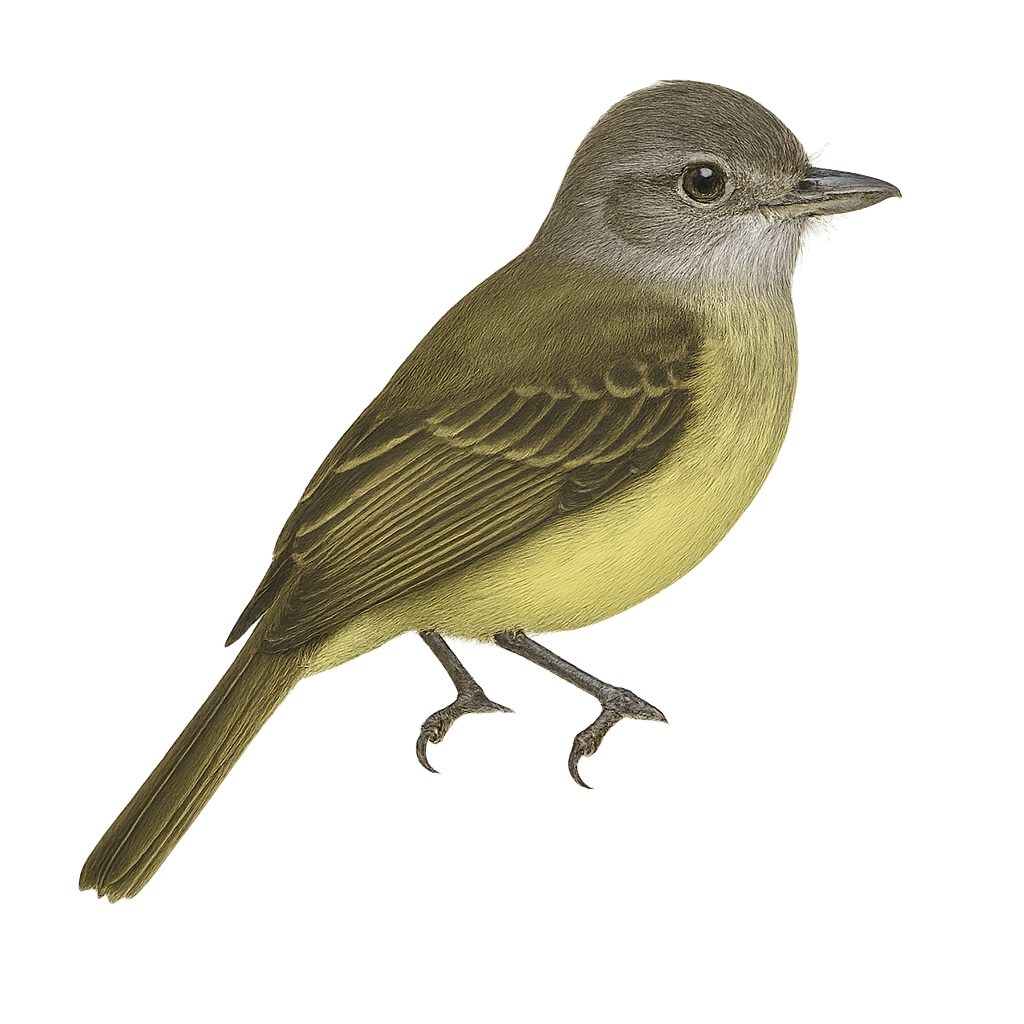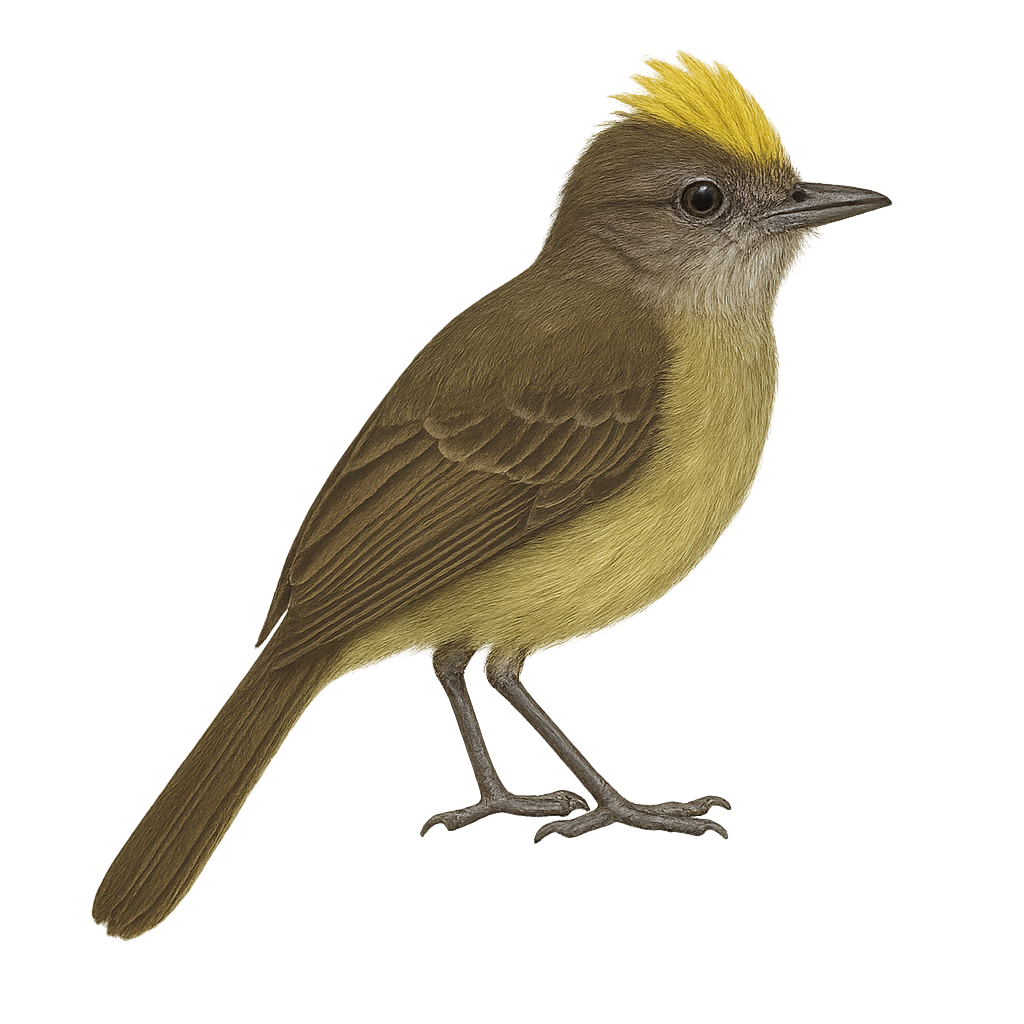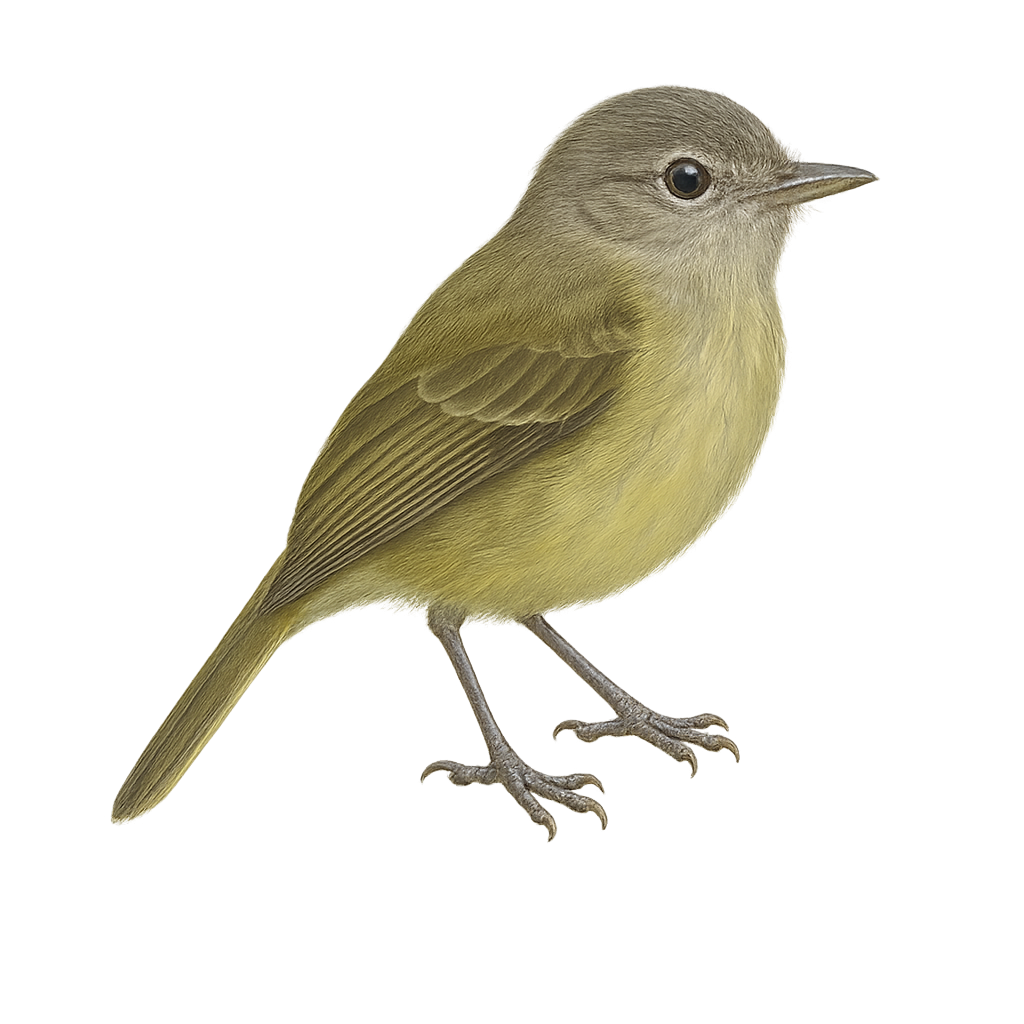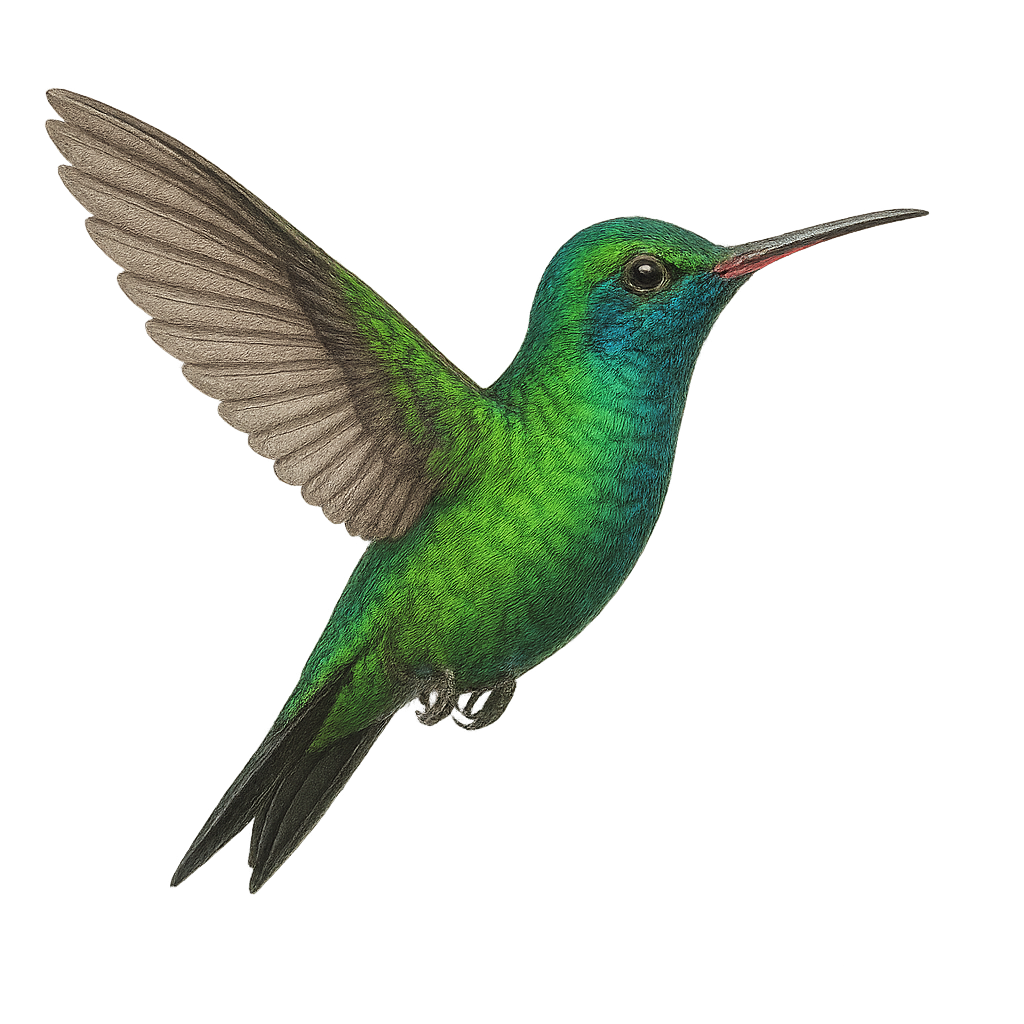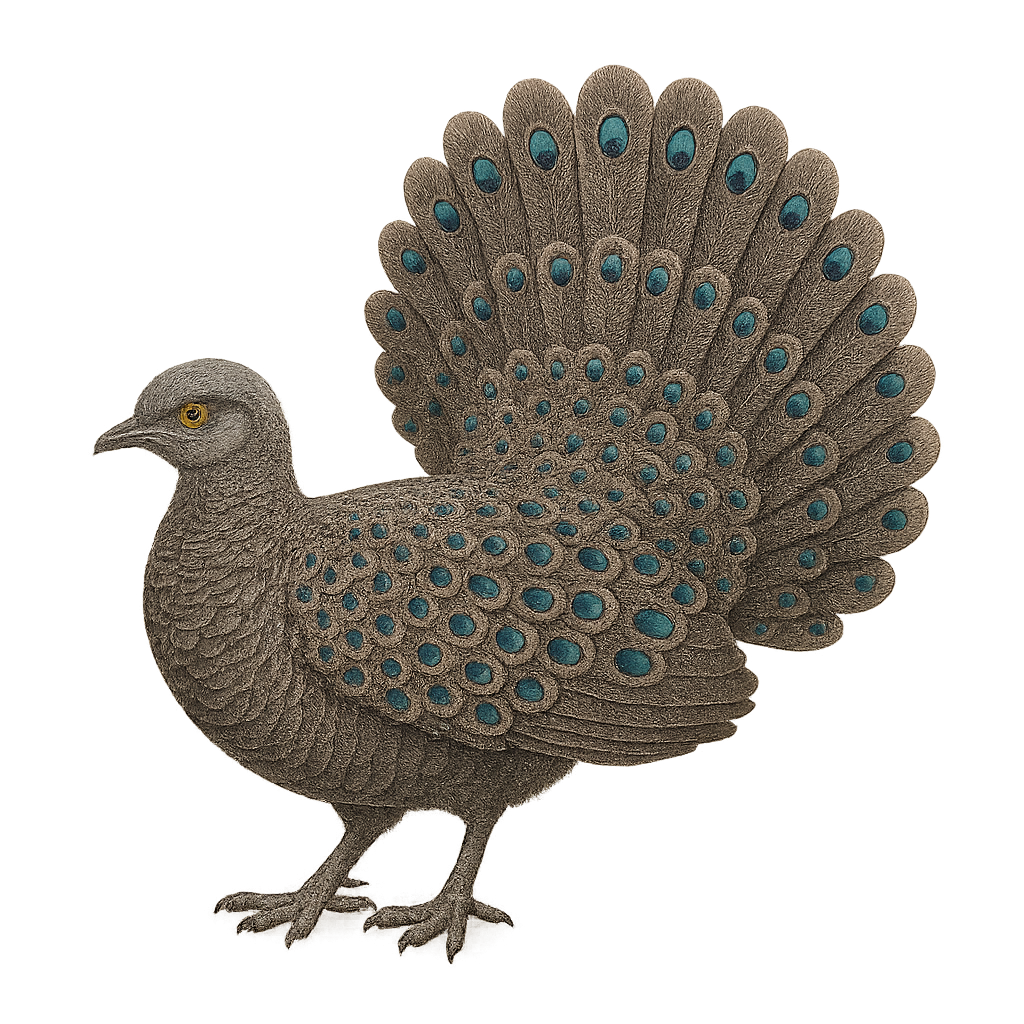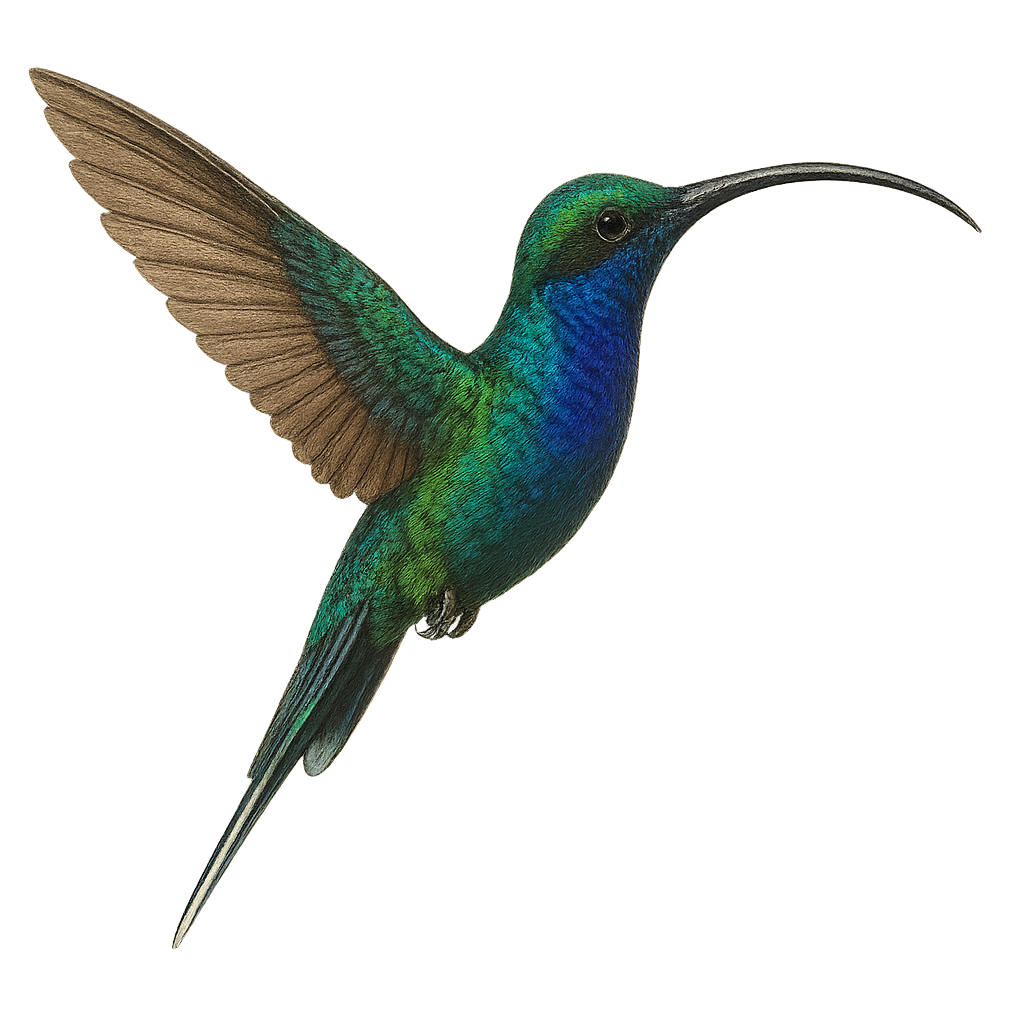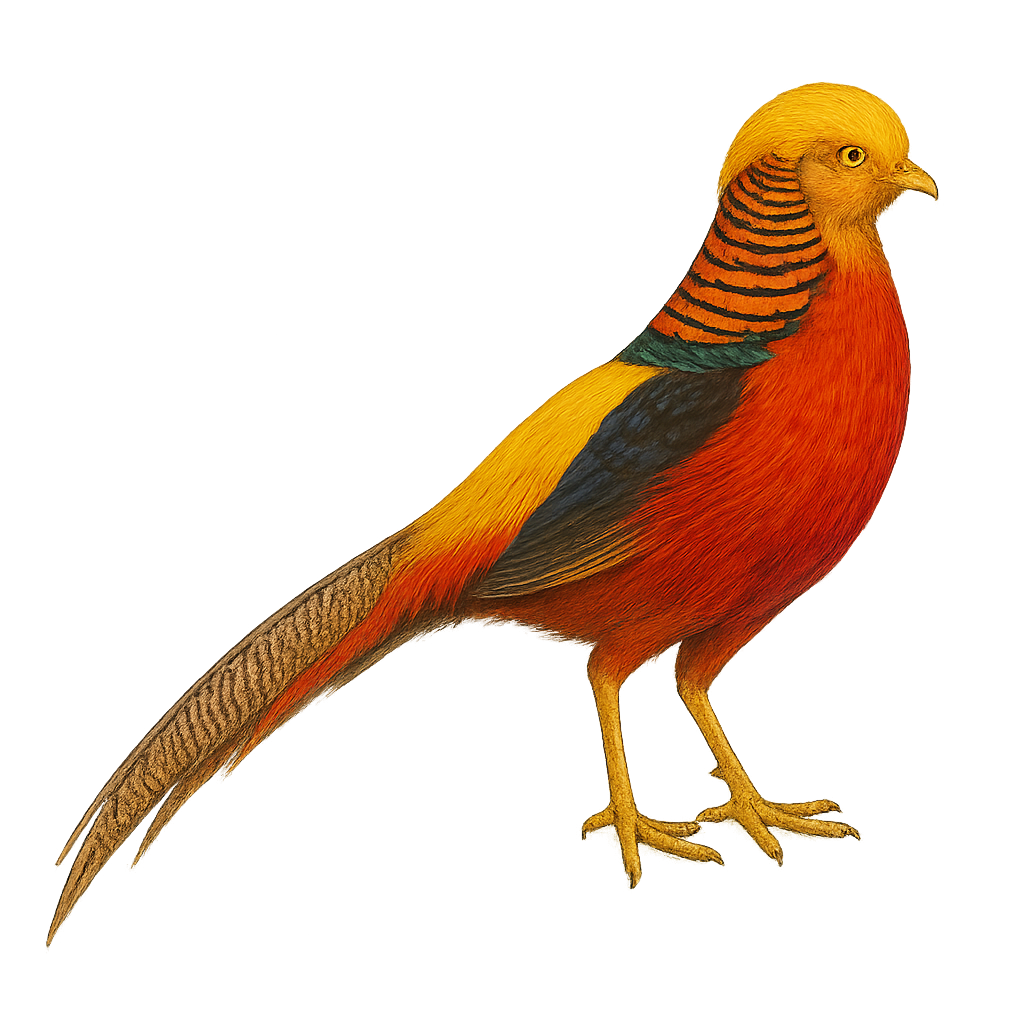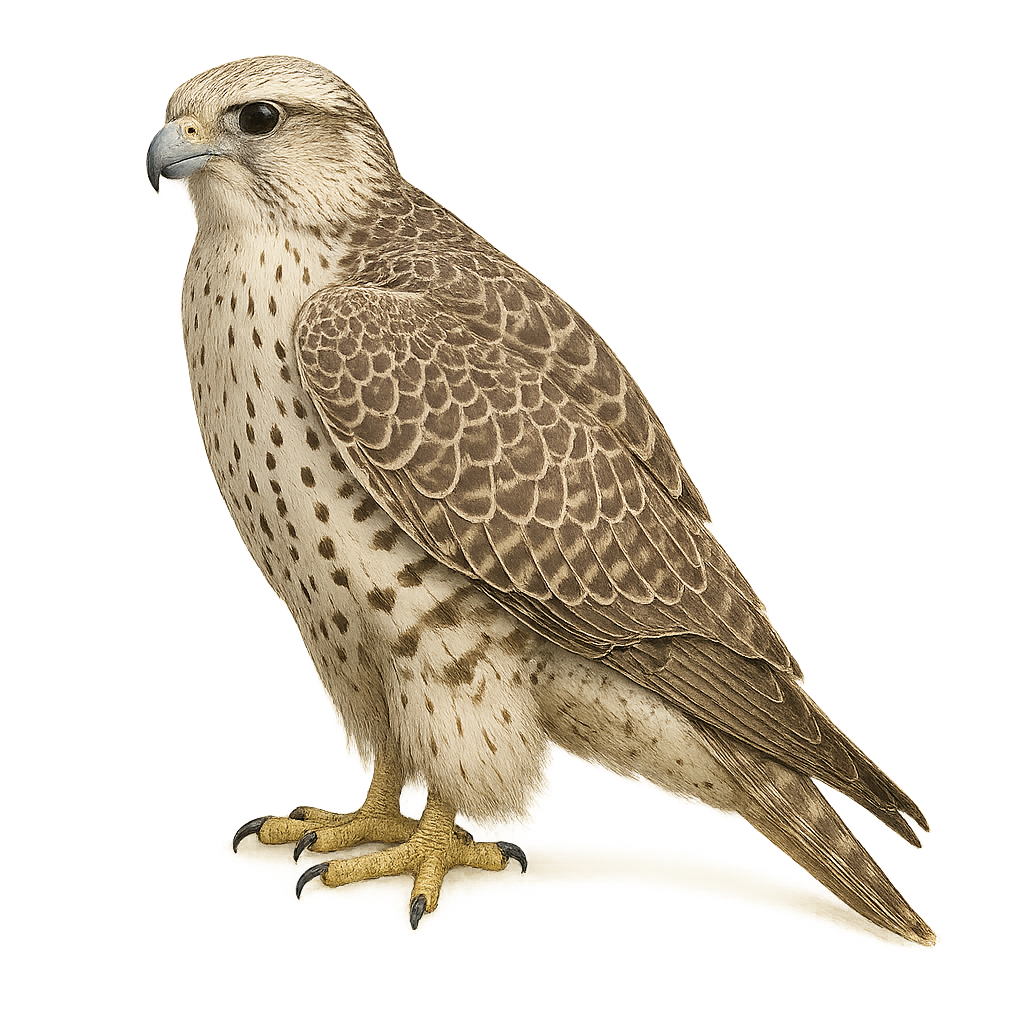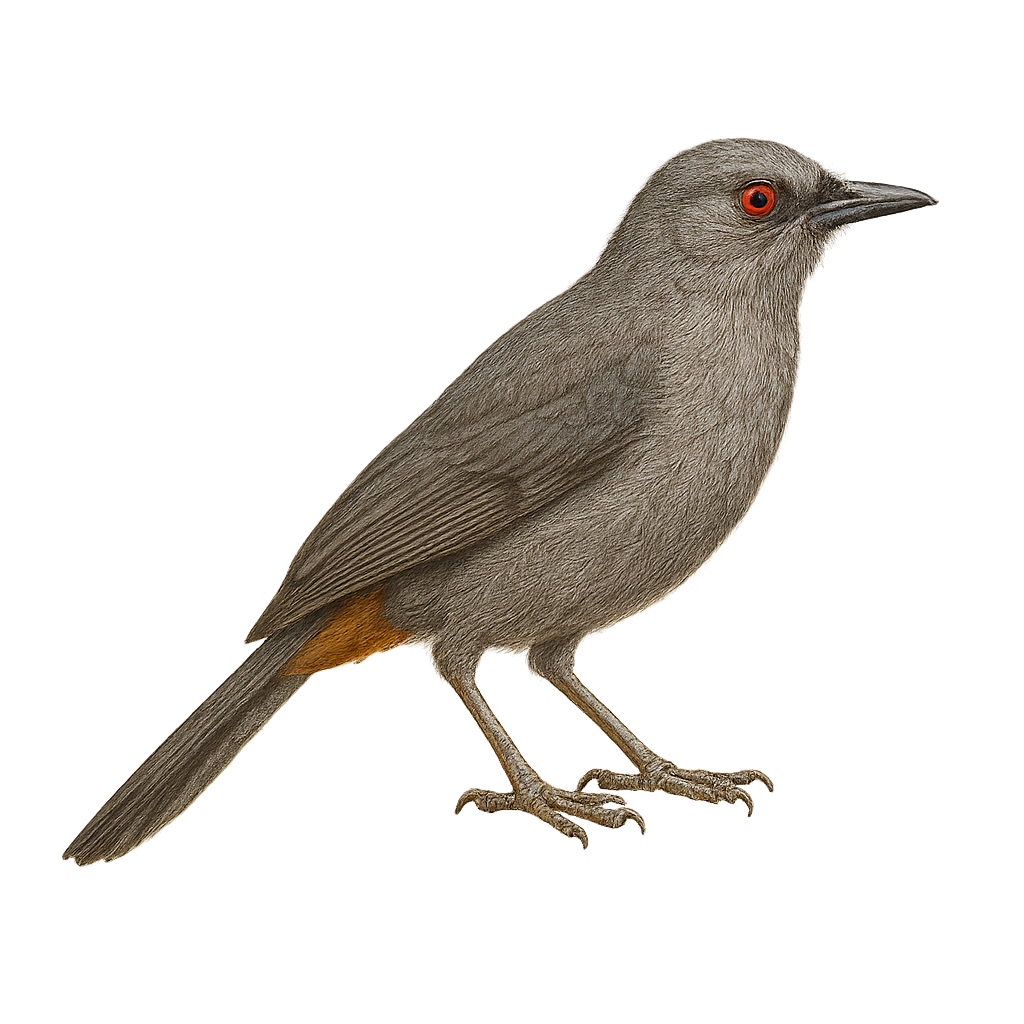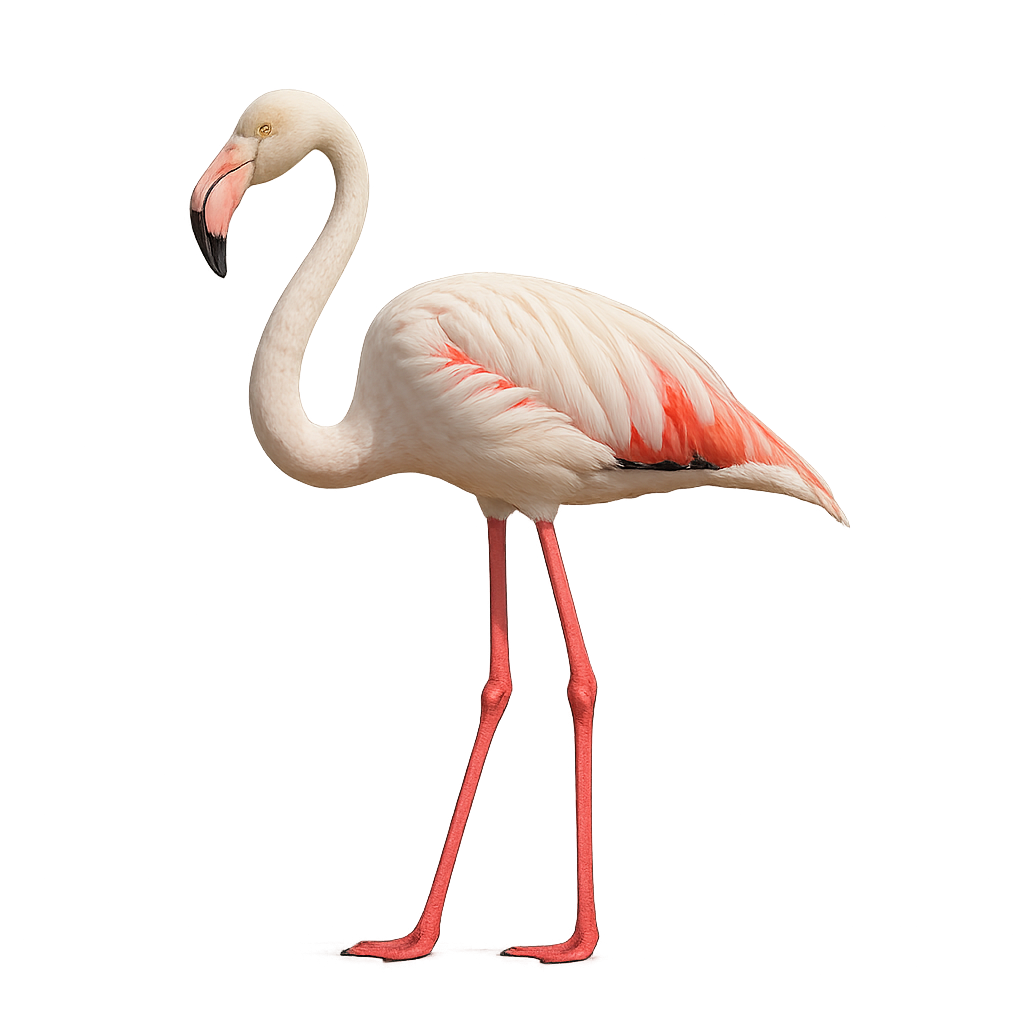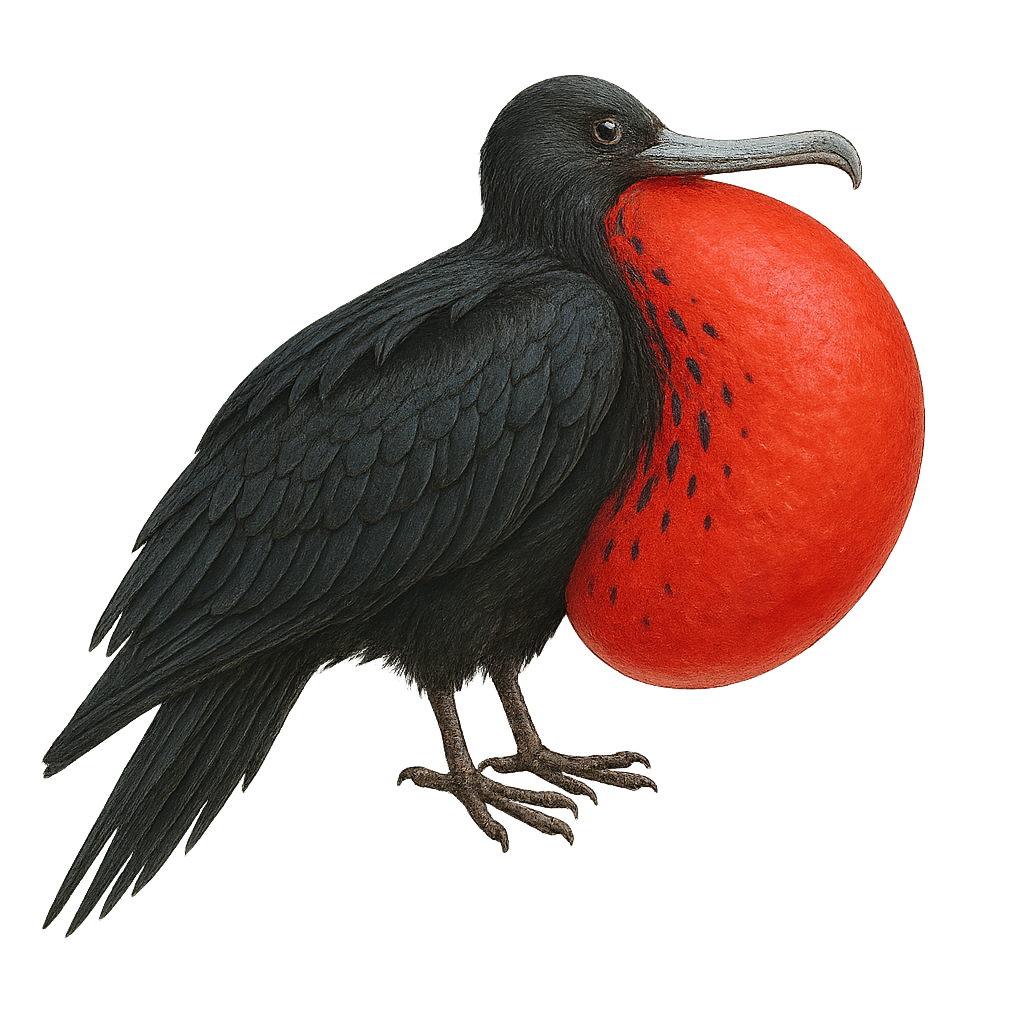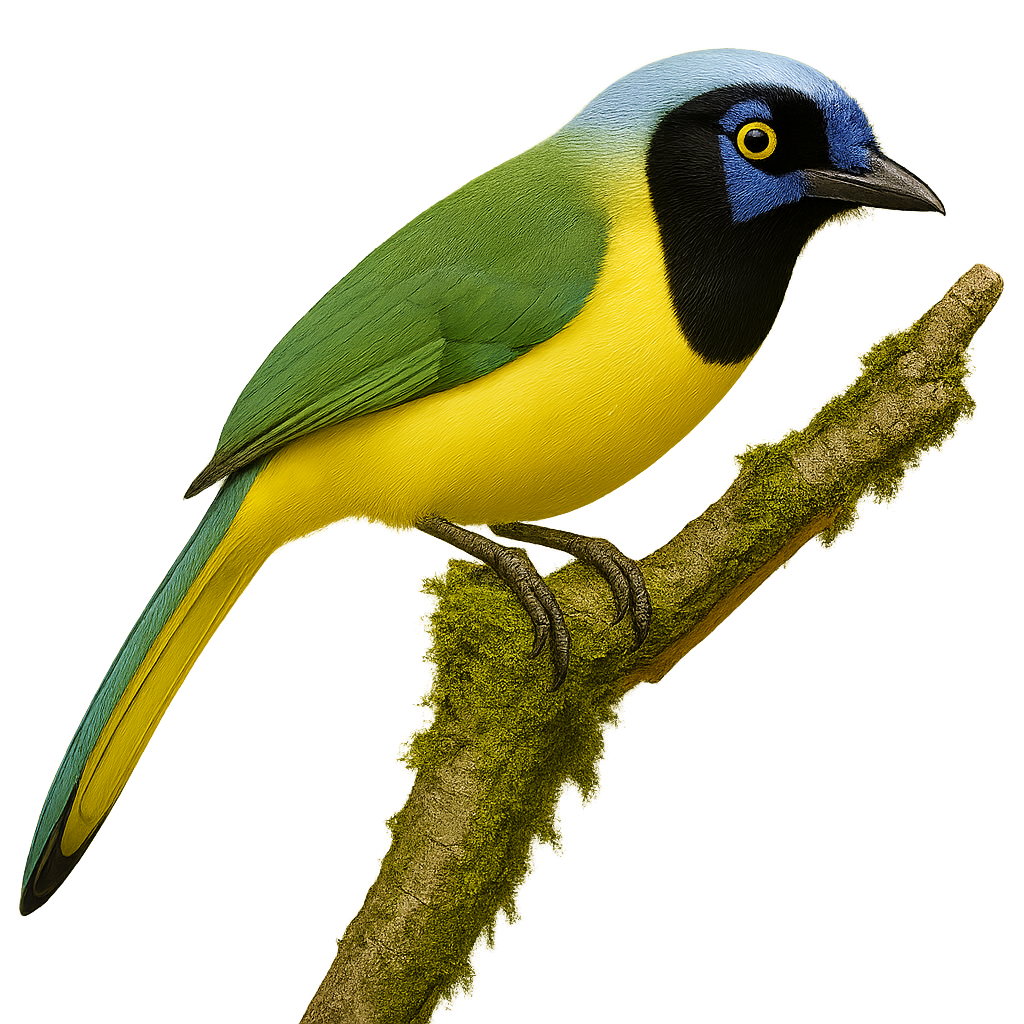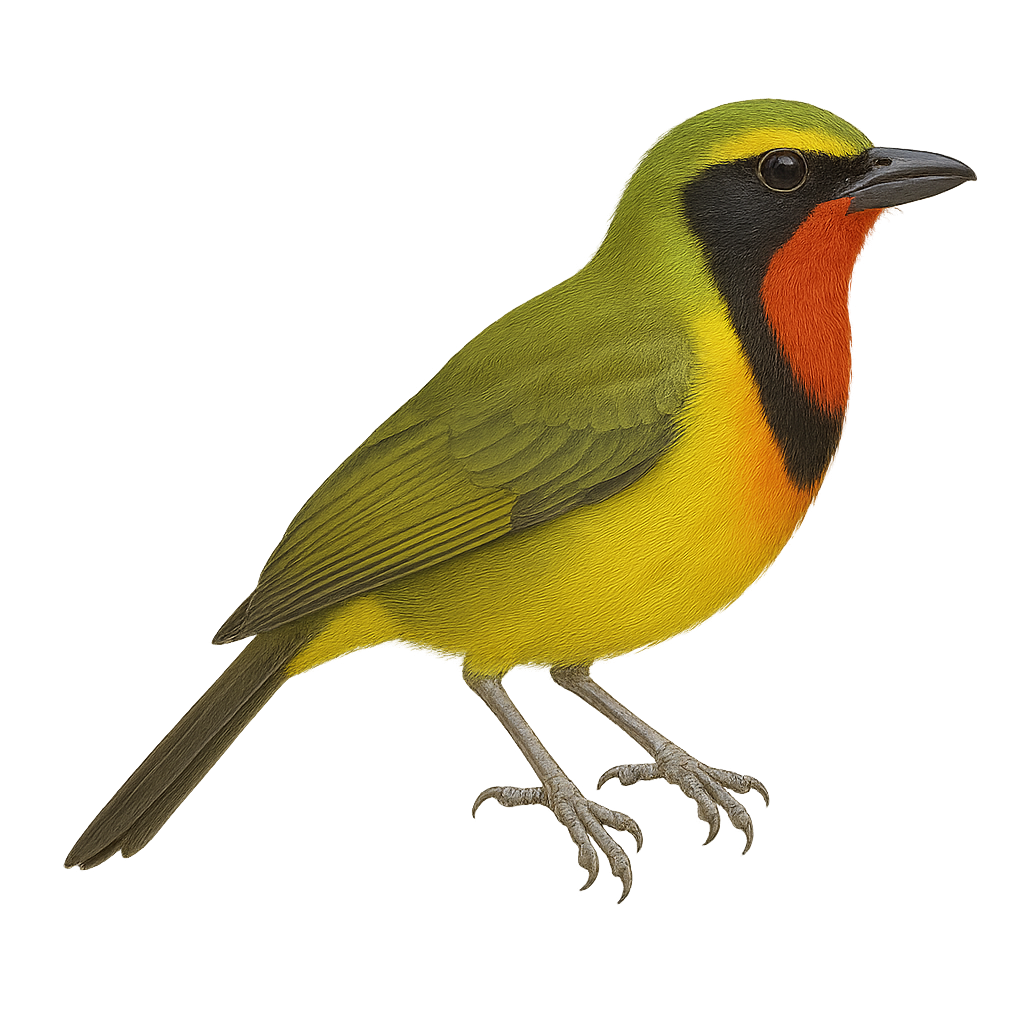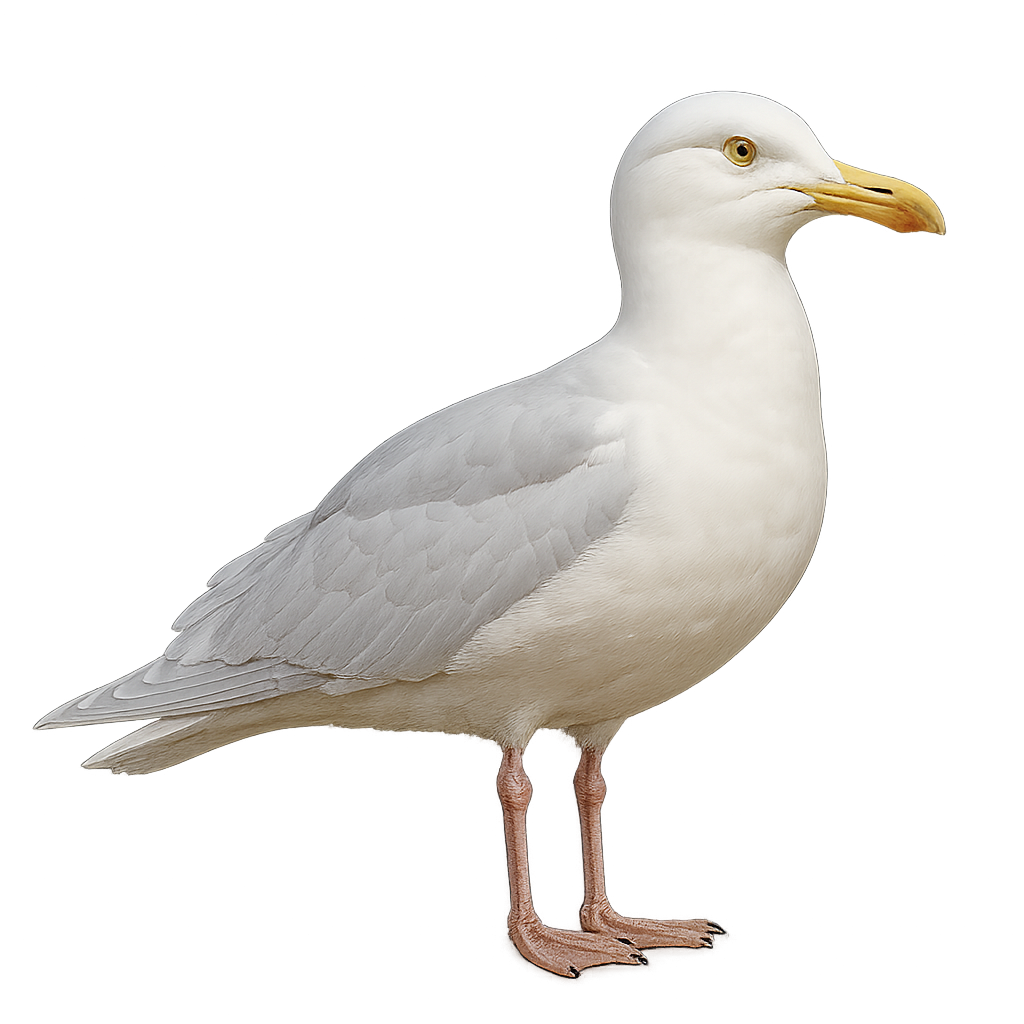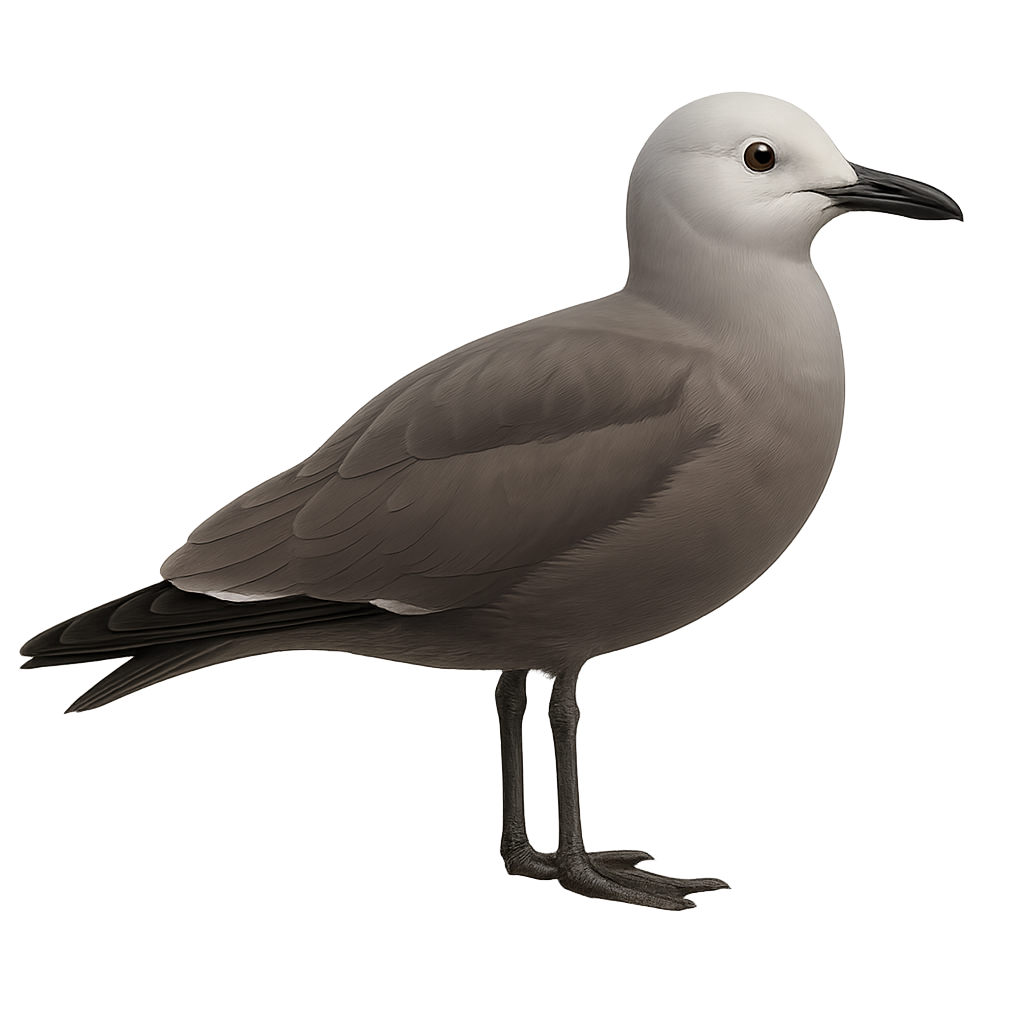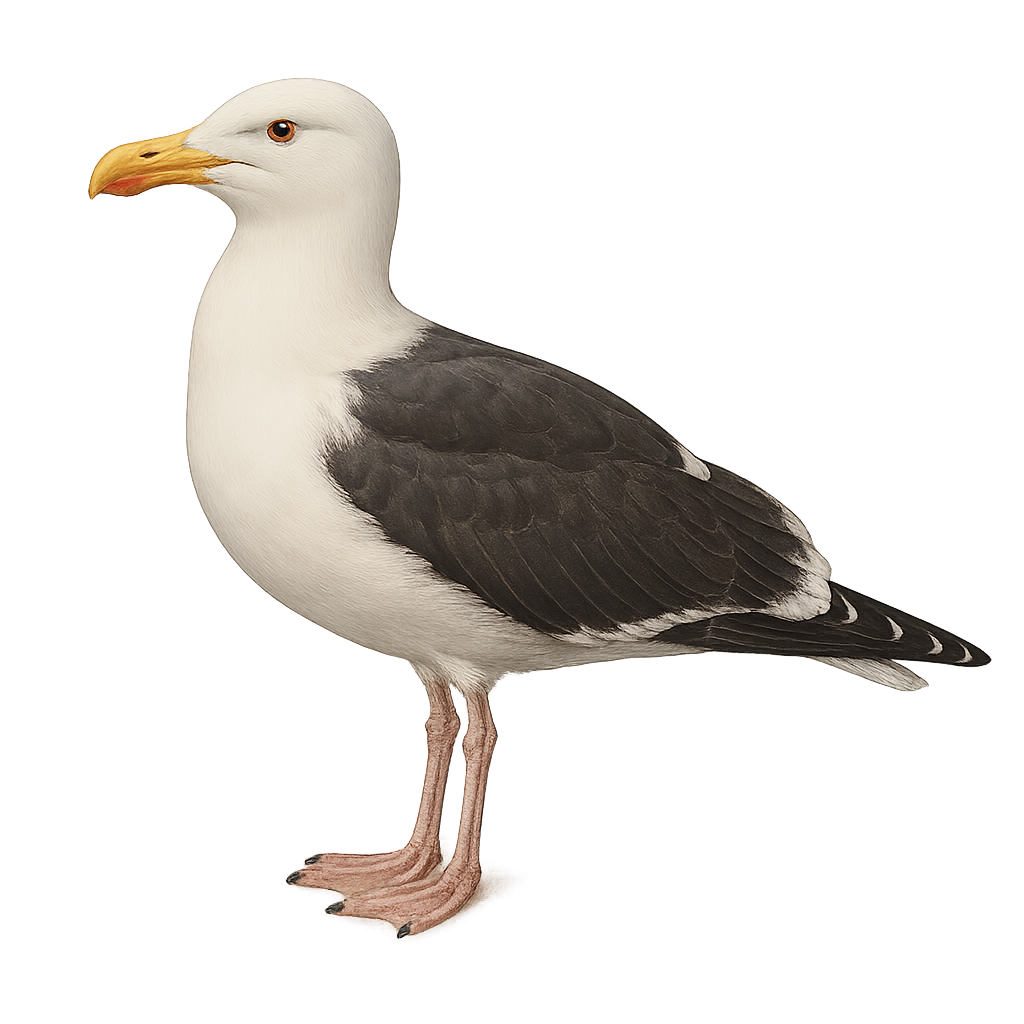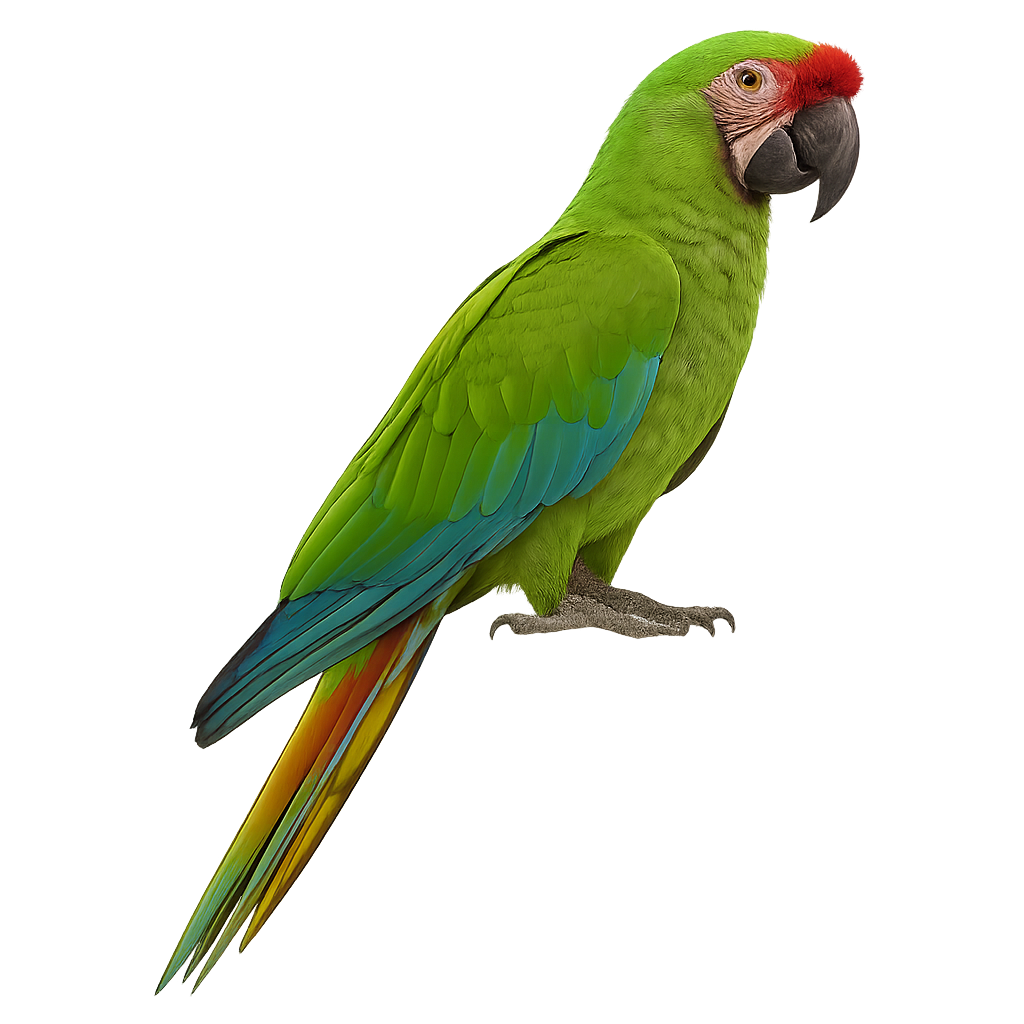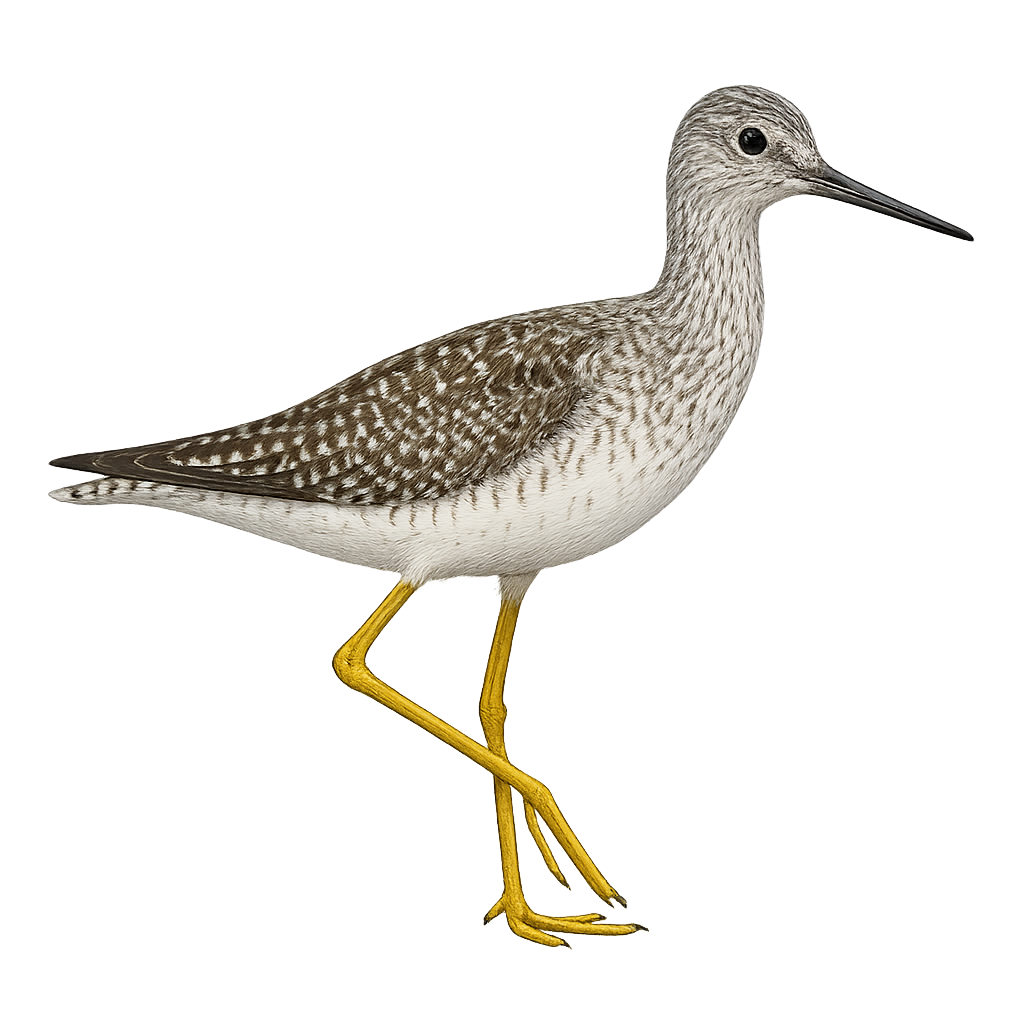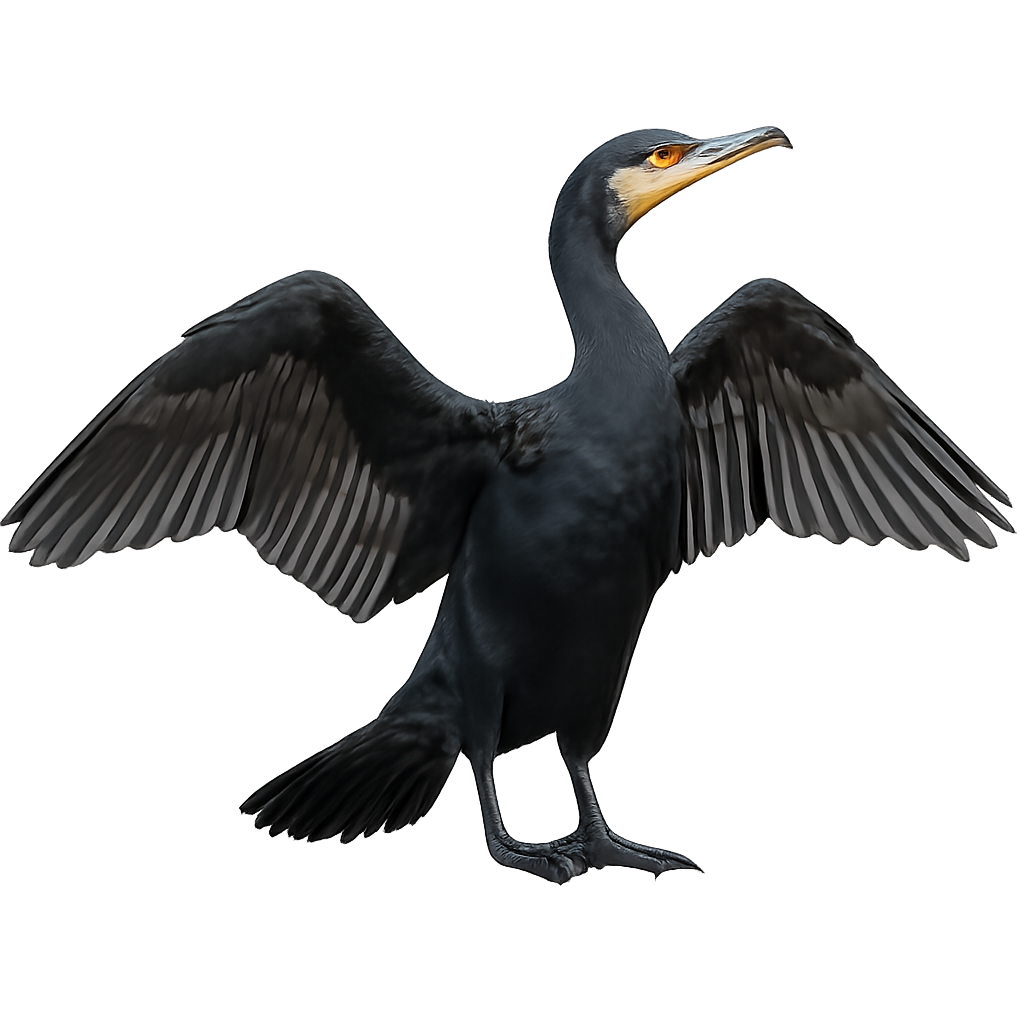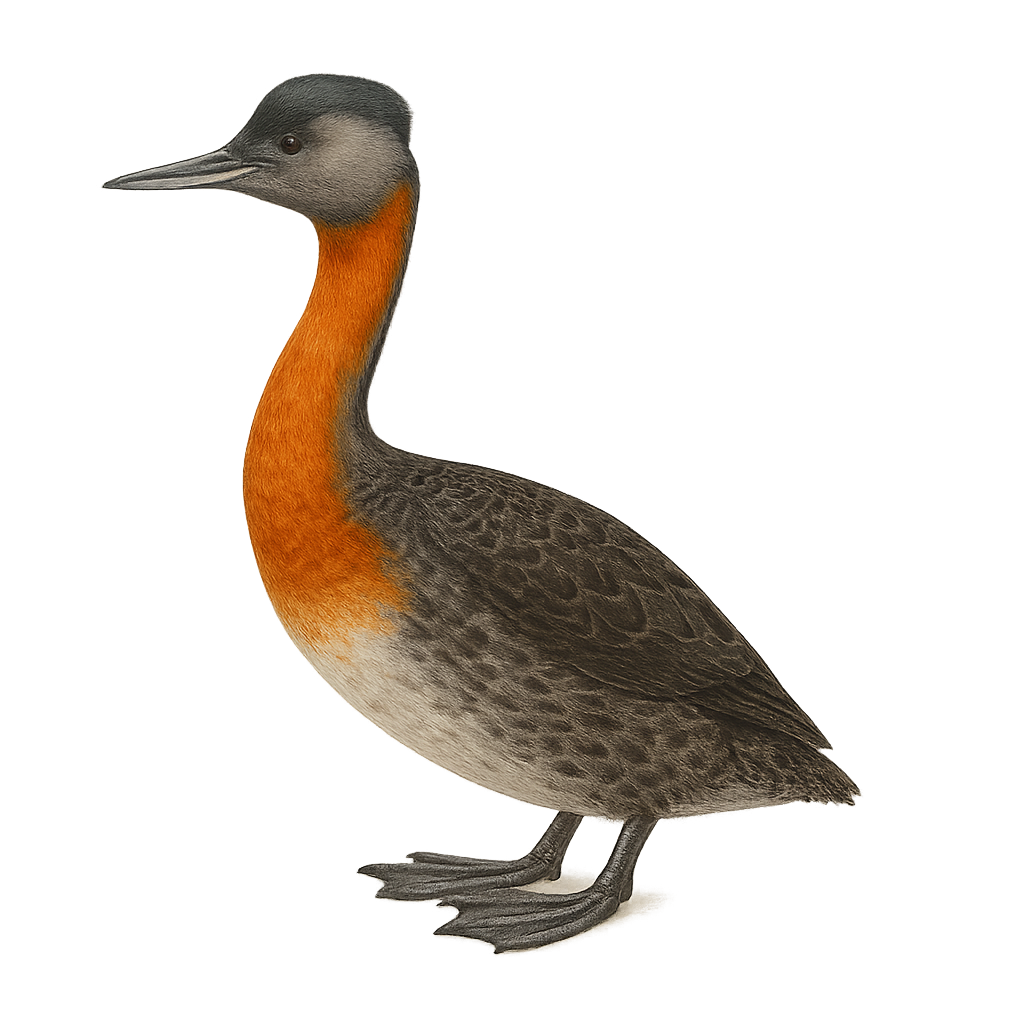The Golden Parakeet, or Guaruba guarouba, is a medium-sized bird known for its bright yellow plumage and green wings. Native to the Amazon rainforest in Brazil, it is often seen in noisy flocks. This species is threatened by deforestation and illegal trade. It primarily feeds on fruits, seeds, and flowers. Its social behavior is characterized by strong interaction within groups, and it is known for its curious and playful nature. The Golden Parakeet is a symbol of Amazonian biodiversity and the importance of conserving natural habitats.
The Green Junglefowl, or Gallus varius, is a gallinaceous bird species native to the Indonesian islands of Java, Bali, and Lombok. This striking bird is known for its vibrant plumage, featuring shades of green, blue, and black with metallic sheen. The male boasts a bright red comb and distinctive facial wattles. It primarily inhabits tropical forests, savannas, and agricultural areas, feeding on seeds, insects, and small invertebrates. The Green Junglefowl is a social bird, often seen in small groups. Although its habitat is threatened by deforestation, it is currently listed as least concern by the IUCN.
The Grey Junglefowl, or Gallus sonneratii, is a pheasant species native to the forests of southern India. Known for its striking plumage, it features shades of grey, black, and metallic sheens. Males have a vivid red comb and wattles, along with neck feathers that resemble golden filaments. These birds are primarily terrestrial, preferring dense forests and wooded areas. They feed on seeds, insects, and small invertebrates. The Grey Junglefowl plays a crucial role in the ecosystem by aiding in seed dispersal. Although relatively common in its natural habitat, it faces threats from habitat loss due to deforestation.
The Green-and-black Fruiteater, or Pipreola riefferii, is a striking bird found in Andean montane forests from Venezuela to northern Bolivia. Males show vivid green upperparts, a bold black belly, and a bright yellow throat, while females are duller with streaked underparts. This secretive species often remains motionless in the canopy or dense undergrowth, feeding primarily on fruit. It prefers humid forests between 1,500 and 3,000 meters in elevation. Usually seen alone or in small groups, the species is considered stable but can be affected by forest fragmentation.
The Giant Coua, or Coua gigas, is a bird endemic to Madagascar, belonging to the Cuculidae family. It is recognizable by its blue-gray plumage and long tail. This terrestrial bird prefers dry forests and savannas, where it feeds mainly on insects, fruits, and small reptiles. The Giant Coua is diurnal, active mainly in the morning and late afternoon. Although capable of flight, it prefers to move by running. It is known for its melodious song and varied calls. The Giant Coua plays an important role in the ecosystem as an insect predator and seed disperser.
The Gouldian Finch, or Chloebia gouldiae, is a brightly colored bird native to Australia. This small passerine is renowned for its vivid plumage, featuring a mix of bright colors such as red, green, yellow, and blue. Males are generally more colorful than females, which is typical in many bird species. They primarily inhabit savannas and open grasslands, where they feed on seeds and insects. The Gouldian Finch is a social bird, often seen in small groups. However, it is considered vulnerable due to habitat loss and environmental pressures.
The Greater Racket-tailed Drongo, or Dicrurus paradiseus, is a striking bird known for its long tail feathers shaped like rackets. It is predominantly black with metallic blue and green sheen, and features a distinctive crest on its head. This bird is renowned for its intelligence and ability to mimic the sounds of other birds and animals. It inhabits the tropical and subtropical forests of South and Southeast Asia, where it primarily feeds on insects. The Greater Racket-tailed Drongo is often seen following groups of primates to catch insects disturbed by their movement. It is also territorial and can be aggressive towards intruders.
The Grey-capped Flycatcher is a small passerine bird belonging to the Tyrannidae family. It is primarily found in the tropical and subtropical forests of Central and South America. This bird is characterized by its grey head, white belly, and greenish wings. It is often seen catching insects in flight, thanks to its agile and swift movements. Although discreet, its melodious song can be heard throughout the canopy. The Grey-capped Flycatcher plays an important role in the ecosystem by regulating insect populations and participating in the pollination of certain plants.
The Greenish Elaenia, Myiopagis gaimardii, is a small passerine bird belonging to the Tyrannidae family. It is primarily found in the tropical rainforests of Central and South America, where it is distinguished by its olive-green plumage and lighter belly. This bird is often observed alone or in small groups, feeding mainly on insects caught in flight. Its ability to blend into dense foliage sometimes makes it difficult to spot. Although not currently threatened, deforestation poses a potential risk to its natural habitat. The Greenish Elaenia is also known for its distinctive song, which plays a crucial role in communication between individuals, especially during the breeding season.
The Greater Elaenia is a medium-sized bird belonging to the Tyrannidae family. It is characterized by its olive-gray plumage on the back and lighter underparts, with a subtle crest on its head. This bird is mainly found in the tropical rainforests and wooded areas of South America, particularly in Colombia, Venezuela, and Brazil. Its song is a melodious whistle often heard at dawn and dusk. The Greater Elaenia is a migratory bird, moving seasonally to find food resources. It primarily feeds on insects and small fruits, which it catches in flight or by foraging through foliage.
The Greenish Elaenia, Myiopagis subplacens, is a small passerine bird belonging to the Tyrannidae family. It is primarily found in the tropical and subtropical forests of South America, particularly in Colombia, Ecuador, and Peru. This bird is characterized by its olive-green plumage on the back and lighter underparts, with slightly darker wings. Its short, straight bill is well-suited for its diet, which mainly consists of insects and fruits. The Greenish Elaenia is a diurnal bird, most active in the morning and late afternoon. It is often seen alone or in small groups, moving nimbly through the canopy in search of food.
The Greenish Elaenia is a small passerine bird from the Tyrannidae family, widely distributed across Central and South America. Its plumage is primarily olive green, with lighter shades on the belly and slightly darker wings. This bird is characterized by its subtle crest and relatively short beak. It mainly inhabits tropical and subtropical forests but can also be found in open woodlands and forest edges. The Greenish Elaenia is an active insectivore, often seen catching insects in flight or foraging among foliage. Its song is a key aspect of its territorial behavior, often heard before seen.
The Glittering-bellied Emerald, or Chlorostilbon lucidus, is a small hummingbird with dazzling, predominantly green plumage with metallic sheen. This winged jewel is endemic to the subtropical and tropical regions of South America, particularly in Argentina, Brazil, and Uruguay. It inhabits open forests, savannas, and urban gardens, where it primarily feeds on nectar, playing a crucial role in plant pollination. Its rapid and agile flight allows it to move easily between flowers. Despite its small size, it is territorial and does not hesitate to chase intruders from its feeding area. Its breeding period varies by region, but it is generally active year-round.
The Grey Peacock-Pheasant, or Polyplectron bicalcaratum, is a captivating bird from the Phasianidae family, native to the dense forests of Southeast Asia. It is recognizable by its grey plumage adorned with eye-like patterns, giving it a majestic appearance. Males display long tail feathers during courtship to attract females. This bird prefers forest habitats where it feeds on seeds, insects, and small invertebrates. Although discreet, it is sometimes seen in small family groups. Its ability to blend into dense vegetation makes it difficult to spot, but its melodious call often reveals its presence.
The Green Hermit, or Phaethornis guy, is a captivating hummingbird found primarily in the humid tropical forests of Central and South America. This small bird is recognizable by its bright green plumage and distinctive long tail. Both males and females exhibit similar features, although males often have longer tails. They primarily feed on nectar, using their long curved bills to reach tubular flowers. In addition to nectar, they also consume small insects to supplement their diet. Green Hermits are known for their territorial behavior, vigorously defending their food sources against intruders. Their fast and agile flight is a spectacle to behold, especially as they move from flower to flower.
The Golden Pheasant, Chrysolophus pictus, is a stunning bird native to the mountainous forests of China. It is renowned for its vibrant plumage, particularly the male, which displays bright colors such as red, yellow, and blue. Its head is adorned with a golden crest that extends into a golden mantle on its back. Females, on the other hand, are more subdued with brown mottled plumage that allows them to blend into their natural habitat. These birds are primarily terrestrial, feeding on seeds, berries, and insects. Although they are capable of flight, they prefer to run to escape predators.
The gyrfalcon, or Falco rusticolus, is the largest of the falcons, known for its robustness and ability to survive in harsh Arctic environments. Its impressive size, with a wingspan reaching up to 160 cm, and its variable plumage ranging from pure white to dark grey, make it a spectacular bird. It is primarily found in circumpolar regions, nesting on cliffs and isolated mountains. A formidable predator, it mainly hunts medium-sized birds such as ptarmigans and ducks. The gyrfalcon is a symbol of power and majesty in many Nordic cultures. Its population is stable, although locally threatened by climate change and human disturbance.
The Galinier's Turaco is a fascinating bird, endemic to the mountainous forests of Ethiopia. With its bright green plumage and distinctive crest, it is easily recognizable. This bird measures about 40 cm in length and primarily feeds on fruits, but it can also consume leaves and flowers. It is often observed in small groups, moving agilely through the canopy. Although its habitat is limited, it adapts well to high-altitude forests, allowing it to survive despite increasing human pressure. Its presence is an indicator of the health of the region's forest ecosystems.
The garden warbler is a small passerine bird found primarily in hedgerows, gardens, and bushes across Europe and Asia. It is easily recognized by its grey-olive plumage, light belly, and keen eyes. This small bird is especially known for its powerful and melodious song, which it performs during the breeding season. It primarily feeds on insects and berries, which it finds in bushes and trees.
The Greater Flamingo is a large bird with distinctive plumage, easily recognizable by its vivid colors and graceful silhouette. It stands about 1.4 to 1.7 meters tall and weighs between 2.5 and 4 kg. Its plumage is primarily pale pink, with more intense shades on the wings, and its long legs and neck give it a majestic posture. The Flamingo's beak is curved downward, allowing it to filter water and feed primarily on plankton, small shrimp, and algae. This bird primarily inhabits wetlands, saline lagoons, and salt marshes, where it often gathers in large colonies. Flamingos feed by dipping their heads into the water while walking in shallow waters, using their beaks to filter food. While the species is not threatened, it faces risks related to habitat loss, pollution, and human disturbance.
The Great Frigatebird, or Fregata minor, is an impressive seabird known for its large size and wingspan, which can reach up to 2.3 meters. This large black bird is easily recognizable by its slender silhouette and hooked beak. Males display a bright red gular pouch that they inflate to attract females. Frigatebirds are masters of flight, capable of staying aloft for several days thanks to their long, slender wings. They primarily feed on fish and squid, which they catch in flight or by harassing other birds to steal their prey. They are mainly found in the tropical and subtropical regions of the Pacific and Indian Oceans.
The Green Jay, or Cyanocorax yncas, is a striking bird with vibrant plumage, primarily green with shades of blue and yellow. It inhabits the tropical and subtropical forests of Central and South America. This sociable bird lives in groups and is known for its intelligence and tool-using abilities. It primarily feeds on insects, fruits, and seeds. The Green Jay is also an excellent mimic of sounds, allowing it to communicate effectively with its peers. Its presence is often marked by its distinctive calls and agile flight through the dense canopy.
The Green-backed Bushshrike, or Telophorus viridis, is a colorful and captivating bird primarily found in the wooded regions and savannas of sub-Saharan Africa. It is easily recognizable by its bright green plumage on the back, contrasting with shades of yellow and red on the belly and chest. This bird also features a distinctive black mask around the eyes, enhancing its piercing gaze. The Green-backed Bushshrike is a relatively discreet bird, often heard before seen, thanks to its melodious and varied song. It primarily feeds on insects but also enjoys small fruits. Although generally solitary, it can sometimes be observed in small family groups.
The Glaucous Gull is a large seabird, easily recognizable by its imposing size and distinctive plumage. It measures between 60 and 70 cm in length, with a wingspan of 140 to 150 cm, and weighs between 1.2 and 2.5 kg. Its plumage is primarily white, with light gray wings and black markings on the tips of the feathers. The head and beak are generally yellow, with a red band on the beak. This gull is an excellent swimmer and an opportunistic hunter, feeding mainly on fish, crustaceans, and human waste when near urban areas or ports. The Glaucous Gull primarily inhabits coastal regions of the Arctic and North Atlantic and is well adapted to cold, marine environments. Although it is not endangered, it faces risks related to pollution, habitat loss, and human disturbances.
The Grey Gull, or Leucophaeus modestus, is a medium-sized coastal bird primarily found along the Pacific coasts of South America. It is characterized by its uniform ash-grey plumage and black legs and bill. Unlike other gulls, it often nests far from the coast, in deserts or arid areas, which is unusual for a seabird. It feeds mainly on small fish, crustaceans, and invertebrates found in shallow waters. The Grey Gull is also known for its seasonal migrations, moving north during the austral winter. Although its conservation status is currently of concern, it is vulnerable to human disturbances and environmental changes.
The Great Black-backed Gull, Larus marinus, is the largest gull, with an impressive wingspan of up to 1.7 meters. Its plumage is mainly white with a black back, and it has pink legs. Found primarily along the North Atlantic coasts, it feeds on fish, smaller birds, and carrion. Opportunistic, it often ventures into ports and landfills for food. Although often solitary, it can be seen in groups during nesting. Its call is loud and harsh, typical of gulls. During the breeding season, it builds its nest on cliffs or rocky islands, usually laying three eggs.
The Great Green Macaw is a large, colorful, and majestic parrot known for its vibrant green plumage, with touches of blue, yellow, and red on the wings and face. It measures about 85 to 95 cm in length, with a wingspan of 1.2 to 1.4 meters, and weighs between 900 and 1,200 g. Its dominant green plumage is complemented by blue feathers on the wings and red around the face and chest. The Great Green Macaw primarily inhabits the tropical rainforests of Central and South America, notably in Colombia, Venezuela, Panama, Costa Rica, and Nicaragua. It feeds mainly on fruits, nuts, seeds, and flowers. This parrot is highly social and typically lives in family or small groups, but can also be seen in large flocks in its natural habitat. Although the Great Green Macaw is not yet immediately endangered, it faces threats such as habitat loss, illegal wildlife trade, and deforestation.
The Greater Yellowlegs, Tringa melanoleuca, is a medium-sized shorebird belonging to the Scolopacidae family. It is easily identifiable by its long yellow legs and straight, slender bill. Its plumage is primarily gray-brown with white spots, allowing it to blend effectively into its natural habitat. It is commonly found in wetlands, such as marshes, estuaries, and muddy shores. A migratory bird, it breeds in the northern regions of Canada and Alaska, then migrates south to spend the winter in Central and South America. Its call is a clear, melodious whistle, often heard during the breeding season.
The great cormorant is a large waterbird found across much of Europe, Asia, and North Africa. It is easily recognized by its glossy black plumage, long neck, and sharp, pointed beak. This cormorant primarily feeds on fish, which it catches by diving into the water, using its diving technique to capture prey underwater. The great cormorant is also an excellent swimmer and powerful flier.
The Great Grebe, or Podiceps major, is a large aquatic bird primarily found in South America. It is characterized by its reddish-brown neck and chest, contrasting with a darker back. Its long, pointed bill is perfect for catching fish, its main food source. This bird prefers large freshwater bodies but can also be found in estuaries and coastal lagoons. It is an excellent diver, capable of staying underwater for several minutes to hunt. During the breeding season, the Great Grebe builds a floating nest from aquatic vegetation. Although its conservation status is currently "least concern," habitat degradation could pose long-term threats.


